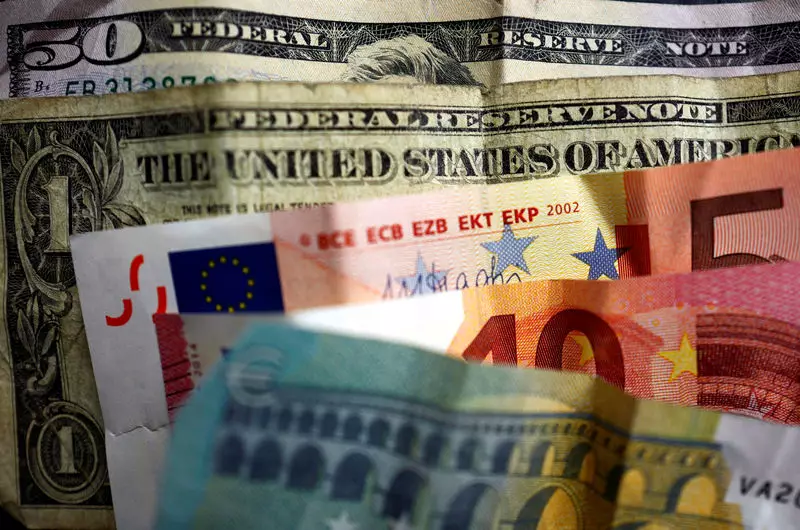The foreign exchange market witnessed a notable decline in the U.S. dollar this past Monday, with the greenback losing ground against major currencies such as the euro and the British pound. The downward pressure on the dollar appears to be closely linked to the prevailing economic sentiments and anticipations surrounding the Federal Reserve’s imminent policy decisions. Specifically, traders are bracing for the potential onset of a rate-cutting cycle, with significant implications for broader financial markets.
As of 04:35 ET, the Dollar Index, which evaluates the dollar against a selection of six prominent currencies, recorded a 0.4% decrease, settling at a reading of 100.357. The crucial Federal Open Market Committee (FOMC) meeting scheduled for Wednesday is widely viewed as a pivotal moment for monetary policy in the United States. With the current interest rates entrenched within the 5.25% to 5.5% bracket for over a year, speculation mounts that a cut is inevitable, especially following the latest dip in the consumer price index (CPI), which has fallen to levels not seen since February 2021.
The market frenzy surrounding potential interest rate cuts has not been without its complexities. Despite the broad consensus that a cut will occur, anxiety lingers over the extent of the reduction. Recent market reports have fueled speculation that the Fed might opt for an aggressive 50-basis-point cut, thus prompting a sell-off of the dollar last Friday as traders braced for significant changes. According to data from CME FedWatch, traders are currently assigning a 59% probability to such a substantial cut occurring at the upcoming meeting.
Contrasted with the struggles of the dollar, the euro has been buoyed by persistent demand, even in the face of recent interest rate cuts by the European Central Bank (ECB). The currency’s strength was reflected in the EUR/USD exchange rate, which rose by 0.4% to 1.1115. This resilience is particularly noteworthy given that the ECB recently reduced rates by 25 basis points. ECB President Christine Lagarde provided cautionary guidance at a recent event, suggesting that future rates will be decided on a case-by-case basis, avoiding commitments that could prematurely affect economic forecasts.
Similarly, the British pound has also demonstrated an upward trajectory, climbing 0.4% to 1.3173 against the dollar. Analysts anticipate that the Bank of England will hold the key interest rate steady at 5% during its forthcoming policy meeting, following a modest 25-basis-point cut initiated in August. Observers note the prevailing strength of the pound, which can be attributed in part to the softness of the dollar and a lack of bearish indicators affecting sterling.
Interestingly, the Japanese yen has registered a significant rise against the dollar, appreciating by 0.8% to reach levels not observed for over eight months. With the Bank of Japan (BOJ) convening for a policy review later this week, market participants are attentively watching for potential movements in interest rates. While the consensus suggests that the short-term policy rate target will be maintained at 0.25%, sentiment among BOJ officials points to an eagerness for higher rates in the future. Such a shift would signal a potential unwinding of yen-funded carry trades, further influencing currency valuations.
On another front, the USD/CNY exchange rate remained relatively stable at 7.0930; however, trading volumes have been dampened due to market holidays observed in Japan, China, and South Korea. The muted activity in regional trading can obscure broader trends, yet it is essential for investors to recognize how global economic conditions interlink with currency performance.
Conclusion: Navigating an Uncertain Economic Terrain
The currency market’s current landscape is marked by the U.S. dollar’s decline in juxtaposition with strengthening currencies like the euro and pound. Focused on upcoming monetary policy shifts from the Federal Reserve, the ECB, and the BOJ, traders are navigating an environment fraught with uncertainty. As the economic horizon begins to change, investors must remain vigilant, adapting their strategies to the dynamic interplay of interest rates, inflationary pressures, and global economic performance. The outcomes of these central bank meetings will undoubtedly shape the course of currency valuations in the short and medium term.

